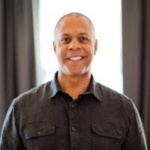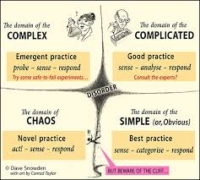
I have never particularly been a fan of July 4.
There is good reason to celebrate the fact that our country has been around for a long time. Even for someone who has been as critical as I have been of every government’s performance during my adult lifetime, there is a lot to be proud of, too.
For good or ill, however, the fourth has never been a time for a balanced celebration in which we reflect on where we have fallen short as well as on our many accomplishments. Instead, we tend to be highly—perhaps too—patriotic, which is measured less in the parades, fireworks, and red-white-and-blue adorned ceremonies than in the fact that we rarely cast a critical eye on our past or a hopeful eye on our future. We probably can’t expect Americans to do that on the Fourth itself when they are actually celebrating the day.
But what about the days leading up to and following the fourth?
Round Number Birthdays
We will have a golden opportunity to do so next year when we turn 250 which will go by all sorts of inelegant names like semiquincentennial, sestercentennial, or bisesquicentennial, none of which I hope will stick! And none of which my spellchecker would accept.
I fear, however, that our 250th will resemble our 200th more than I would like.
I am old enough to remember the bicentennial.
I was 28. I had just finished my first year as a political science professor at Colby College where I had asked my students to cast a loving but questioning eye on our country. Then, as now, the country was in need of a reappraisal and new beginnings after the civil rights and anti-war movement and Watergate. The (seemingly) new women’s and environmental movement gave us new and hopeful ideas to work with.
Yet, when the bicentennial happened, the celebration was all but totally celebratory. And often tacky. I seem to remember being appalled by bicentennial toilet bowls. The fact that I couldn’t find a picture of them leads me to believe that I somehow made them up in the fifty years since then.
Still, despite the efforts of some historians and social critics, I don’t remember casting much of a critical eye on our past nor do I remember using the bicentennial as an opportunity to (re)define new goals that could help bring us closer to our ideals.
As a result, I don’t hold out a lot of hope for our 250th. To be honest, I would have felt that way whoever was in the White House. Given this administration’s history and the few trial balloons it has floated (e.g., the proposal for a UFC title fight on the White House lawn with 25,000 people in attendance), I don’t expect the official celebrations to take us any farther toward reflecting on our past, present, and future than we did fifty years ago.
A Different Kind of Fourth
Then, a friend introduced me to Mark Eckhardt, the founder of One Million Truths.
In the last year or so, I’ve worked with Mark on a number of projects involving peacebuilding, racial healing, and complexity science. All of Mark’s builds on his life experience, including his adoption as a Black child by white parents, training as a Buddhist priest, and decades as a tech- and media-savvy social entrepreneur
 You will hear more about more of Mark’s projects in the weeks to come.
You will hear more about more of Mark’s projects in the weeks to come.
For now, let me focus on his team’s efforts to deal with the semiquincentennial (or whatever you prefer calling it) in a new and more constructive way. It has set itself the ambitious goal of getting one million average Americans to send electronic “postcards” to a current or historical American they admire that lays out the writer’s hopes for their country during these turbulent times.
 You can send yours by following this link. You will see that Mark’s team call these postcards for a reason. You can’t write a lot. You get more than the six words that Michelle Norris gave you with her powerful race card project, but not by a lot. It shouldn’t take you more than five or ten minutes to write your card.
You can send yours by following this link. You will see that Mark’s team call these postcards for a reason. You can’t write a lot. You get more than the six words that Michelle Norris gave you with her powerful race card project, but not by a lot. It shouldn’t take you more than five or ten minutes to write your card.

But once you’ve done so, you get to do the rest of the project that draws on Dave Snowden’s the SenseMaker® platform that I’ve known about and watched from afar for a couple of decades. Snowden has been exploring new ways of analyzing stories and other forms of information since his days as a leading data scientist at IBM in the United Kingdom. Over the last forty years, he and his team have developed remarkable tools that literally help analysts make sense of masses of seemingly unconnected pieces of information like these postcards that deal with a seemingly unconnected set of issues and find some key underlying themes that someone like Mark can then take as a jumping off point for, say, projects to make our 250th birthday more meaningful.
 I won’t go into the details of what Snowden calls the Cynefin (pronounced “canaven” and meaning habitat in Welsh) method. It has always involved lots of complicated math and now includes AI, all of which go way beyond the statistics and coding I learned back in the day. But the results are always stunning and useful. And they help us design projects that point us toward conflict transformation, racial healing, and other goals that have always seemed hard—if not impossible==to reach.
I won’t go into the details of what Snowden calls the Cynefin (pronounced “canaven” and meaning habitat in Welsh) method. It has always involved lots of complicated math and now includes AI, all of which go way beyond the statistics and coding I learned back in the day. But the results are always stunning and useful. And they help us design projects that point us toward conflict transformation, racial healing, and other goals that have always seemed hard—if not impossible==to reach.
Suffice it to say that Mark and his partners (including me) will take the evidence that they gather using SenseMaker to help at least some Americans come to grips with our history and with some constructive steps we can all take to help make our three hundredth birthday celebration a lot more meaningful (which, of course, I won’t be around to experience).
Mark’s team has been working quietly behind the scenes for the last year or so to get this and other projects started. I’m glad to say that I’m now involved as, more importantly, are a number of key organizations that I work with.
Over the course of the next year, they will be gathering your input, asking you to get your friends and family members and neighbors and coworkers to provide their postcards, and then inviting you to engage with the conclusions that we are beginning to see in the analyses of the few thousand postcards that have already come in.
It is way too early to have any confidence in the statistical themes that are coming out of the SenseMaker’s analysis. Rest assured that they are quite different from what you are likely to see in the quasi-official celebrations that are currently being planned.
They will also be a lot more interesting, insightful, and fun to deal with.
To be honest, I don’t know where this project or anything else I’m doing with Mark will take me. But, again, I do know that it will be interesting, insight, and fun.
Feel free to come along for the ride. Just follow the links here or send me an email.
And stay tuned.
The views and opinions expressed in this article are those of the author and do not necessarily reflect the official policy or position of the Alliance for Peacebuilding or its members.
